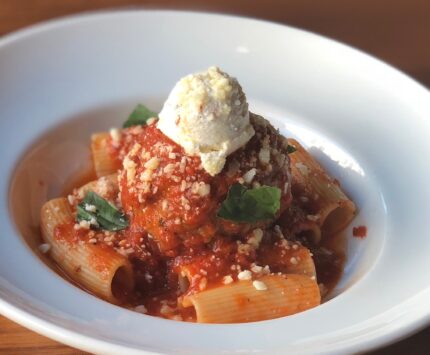Edge And Peyton’s Brand Of Football Is Entering The History Books

Illustration by David Plunkert
It’s Indy’s Hall of Fame this year. The pandemic delayed last year’s Pro Football Hall of Fame inductions, resulting in a doubleheader ceremony where the classes of 2020 and 2021 will both enter the sport’s hallowed halls in Canton. That, combined with the tendency of sportswriters to make deserving Hall of Famers wait a while before getting their due, means iconic Colts Peyton Manning and Edgerrin James are entering the Hall together this August.
It’s about time for James. The team’s pace-setting running back from 1999 to 2005 will finally get his well-deserved induction ceremony, 11 years after his retirement. When he was drafted, skeptics criticized the Colts for selecting him over Heisman winner Ricky Williams. His HoF induction is one more vindication after a dominant career. (As for Manning, this is his first year of eligibility for Canton, having now retired five years ago.)
Manning set the template. The league’s No. 3 all-time passer (71,940 yards) is nearly the gold standard at his position. The NFL has moved in an increasingly pass-happy direction over the last decade, with the number of passing plays up and running plays down. The fact that rushing yards per attempt are also up has done nothing to slow that trend, with teams deciding if you have a Manning-like QB, the smartest thing is to ride him even harder than the Colts rode Manning, and pass, pass, pass.
But James was far from a sidekick. The Colts knew how essential James was as a complement to their Manning-led passing game. Citing James’s inside-out running ability, his pass-blocking, and his receiving, Tony Dungy called him “the most complete back that I’ve ever been around.” James was so central to the Colts’ success that even though he left in free agency a year before the club’s 2006 Super Bowl season, Jim Irsay sent him a ring for their title anyway. And together, Manning and James were lightning: Between 1999 and 2005, the Colts had 7 percent of the NFL’s 300-passing-yard, 100-rushing-yard games, more than twice the share of the average team.
Don’t expect to see it again. As Manning and James get fitted for their gold jackets, it’s worth wondering how many more QB-running back duos will exist in their mold. The likeliest answer is … not many. James cleared 1,200 rush yards five times in seven years in Indy, even as his partner was ever-prolific through the air. In Patrick Mahomes’s three years leading the Chiefs, nobody has run for more than 824 yards in a single season, and just two backs have cleared 500 yards in a campaign. It’s the QB’s show in today’s NFL, and even when it’s not, a running back-by-committee approach now rules the ground game. Workhorses like James are now largely out of favor.
Two for the history books. Tactical innovation and the analytics revolution in sports have made it clear that the passing game is the most efficient way to move the ball down the field, and young quarterbacks have only gotten more talented. Someday, one of them might knock Manning down the all-time passing yards list. But his would-be successors are unlikely to work with a running back like James, who served as the peer to a star QB rather than his understudy. The early-2000s Colts’ style of play will be written into the history books alongside Manning and James this month, a capstone not just for two all-time greats but an entire era of offensive football.





